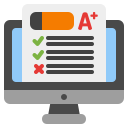Best Platforms for Coding Education: A Comparative Review
Learning Paths and Curriculum Depth
Structured paths on platforms like freeCodeCamp and Codecademy map fundamentals to portfolio projects, making each milestone visible. That clarity reduces decision fatigue, keeps motivation high, and helps learners track tangible progress toward employment-ready skills.
Learning Paths and Curriculum Depth
Coursera and edX often deliver university-designed syllabi that emphasize theoretical grounding, while faster, bootcamp-style tracks emphasize applied building. The best fit depends on whether you prioritize conceptual depth, momentum, or a balanced blend of both.

Practice Environments and Interactivity
Browser-based editors reduce setup friction and encourage experimentation. Replit-style sandboxes, embedded consoles, and instant previews let you focus on logic, iterate faster, and learn by doing from the very first minute.


Practice Environments and Interactivity
Visual and interactive tools—think guided animations, live code scrubbing, and playful exercises—make abstract ideas click. For newcomers, seeing loops, variables, and functions act in real time accelerates understanding and builds confidence early.
Assessment, Feedback, and Community
Auto-Graders and Instant Hints
Automated tests reveal mistakes fast and allow safe trial-and-error. Thoughtful hints nudge understanding without spoiling solutions. The right balance teaches debugging discipline while protecting momentum during challenging problem sets.
Mentors, Forums, and Peer Review
Helpful communities transform solo struggle into shared progress. Forums, chat rooms, and peer code reviews surface alternative approaches, explain tradeoffs, and normalize confusion—all crucial for growth and long-term resilience in coding.
Accountability Through Challenges and Streaks
Daily streaks, weekly challenges, and seasonal events create gentle pressure to keep going. Consistent, low-friction practice beats marathon sessions, and community leaderboards provide friendly motivation without overshadowing genuine learning.
Cost, Access, and Certificates
Free Pathways That Truly Deliver
High-quality free curricula exist and can be enough when combined with discipline and projects. Learners often pair open courses with documentation, tutorials, and open source issues to achieve impressive real-world readiness.
When Upgrades Make Sense
Paid tiers can add structured paths, mentorship, graded assignments, or career services. If those features address specific gaps—focus, feedback, accountability—they can accelerate progress far more than additional content alone.
Certificates, Badges, and Real Value
Certificates can help signal commitment, but portfolios, clarity of thought, and communication matter more. Employer conversations improve when you demonstrate reasoning, show code, and narrate how you solved meaningful problems.

Languages, Specializations, and Career Fit
Front-end tracks emphasize HTML, CSS, and JavaScript frameworks. Data paths feature Python, SQL, and visualization. Systems-oriented tracks cover C, Rust, or Go. Pick a platform that highlights your target stack with meaningful projects.


Real Stories: Learner Journeys and Outcomes
A retail manager used a guided curriculum nights and weekends, shipping one small project weekly. Six months later, a polished portfolio and steady practice habits opened doors to a junior developer interview.
Real Stories: Learner Journeys and Outcomes
A hobbyist followed interactive tutorials, then contributed documentation fixes to a library they learned. Small pull requests evolved into feature work, and the confidence gain outlasted any badge earned along the way.
Build Your Personal Comparative Plan
Write down your target role, time per week, and success measures—projects shipped, concepts mastered, or interview readiness. Clear criteria transform vague browsing into focused evaluation and confident platform selection.

